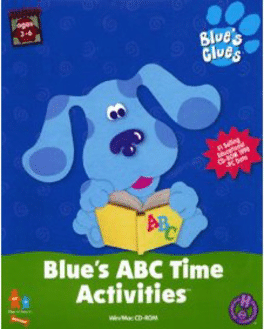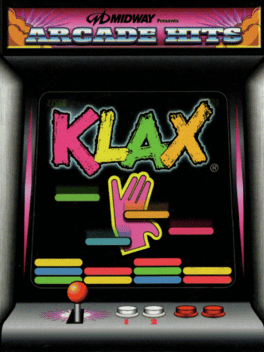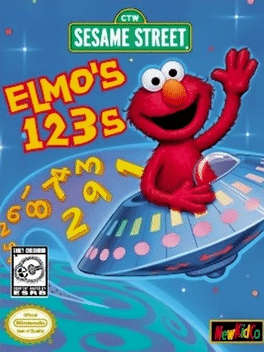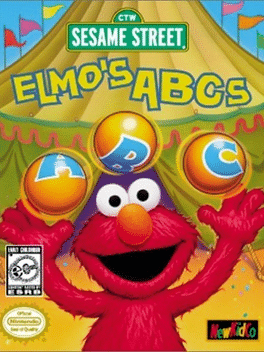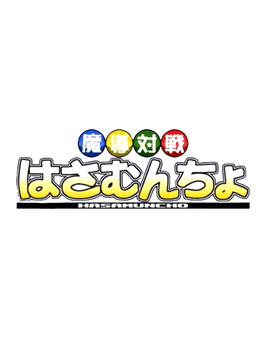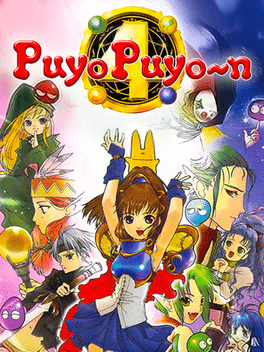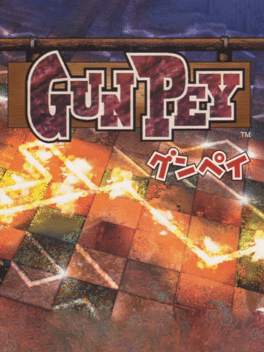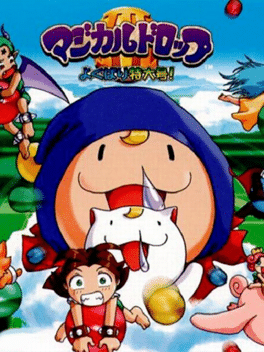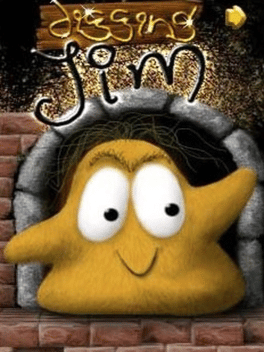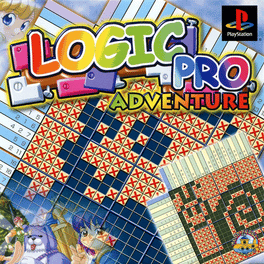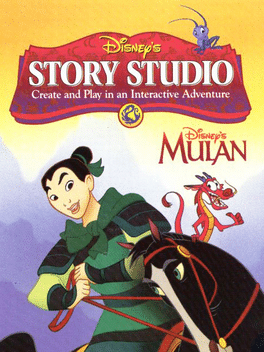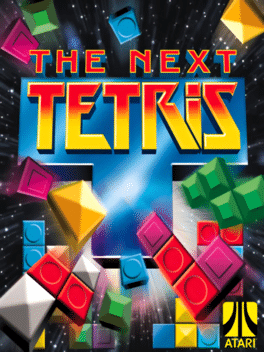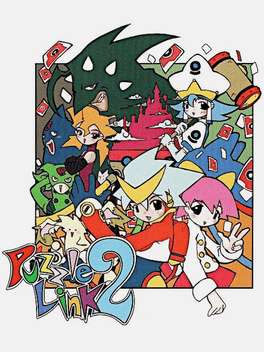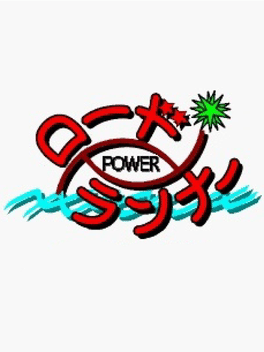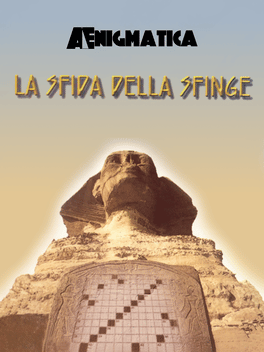New Ps3 Games - Page 268
-
Blue's ABC Time Activities
1999
Blue's ABC Time Activities takes Blue's Clues, the Emmy-nominated #1 preschool TV series, to a whole new interactive level of playful learning. Blue and her friends help preschoolers strengthen essential pre-reading skills as they explore the world of letters, sounds and words in this activity pack featuring multi-level learning activities. Kids identify letters, build vocabulary, practice phonics and create rhymes as they collect words to help Blue build silly stores in her Word Book. Print Blue's Word Book and other activities to share with family and friends. Difficulty levels automatically adjust to meet each child's skill level. -
Midway Presents Arcade Hits: Klax
1999
KLAX - It's simple in concept and easy to play. Catch the colored tiles with the paddle and flip them into bins to make same colored stacks, diagonals and rows of three. Sounds easy? It is. The hard part is pulling yourself away from this fun and addictive game! -
Sesame Street: Elmo's 123s
1999
Get ready to come and play and learn in SESAME STREET: Elmo's 123s for the Game Boy Color. Preschoolers love Elmo it's a simple fact of life and your kids or siblings will have a fun time here while they learn their numbers. There are four basic math concepts to be enjoyed: addition, subtraction, counting, and number pattern recognition. Elmo is the official welcoming committee to visitors from the Planet Zap, and he needs help counting all the stars so his visiting outerspace pals will turn the Sesame Street lights back on. Four cheerful and challenging games await: "How Many Stars," "Beam That Number," "Adding Countdown," and "Take It Away." In "Stars." you'll count how many stars that a speeding spaceship has left in its wake; "Beam" has you beam a spotlight over three patterns. Correctly match the patterns to the number in the lower right hand of the screen and watch rockets blast into space. "Countdown" has you flying with your jetpack and solving three addition equations, and "Take It Away" is similar, only l -
Sesame Street: Elmo's ABCs
1999
Sesame Street: Elmo's ABCs is based on the 1980s computer game Letter-Go-Round. Instead of Sesame Street characters, such as Big Bird, Elmo finds a letter that goes merry-go-round to saying how the letters were. They solve by checking the controls to determine the letter. -
Puzzle Mania 2
1999
Puzzle Mania 2
1999
Based on the basic concepts of "simple and easy to play", "deep and addictive", and "very exhilarating when the mystery is solved" - includes 3 types of puzzle games. -
Puyo Puyo Tsuu
1999
Puyo Puyo Tsuu
1999
Puyo Puyo Tsuu is a Puzzle game, developed by Compile and published by Bandai, which was released in Japan in 1999. -
Magic Battle Hasamuncho
1999
Released in Disc Station Vol 22, Hasamuncho is a marble puzzle game. Players aim to capture the most marbles, with special powers being available to assist them. -
Puyo Puyo~n
1999
Puyo Puyo~n
1999
star 5.7This game was released only in Japan. It is the fourth game in the Puyo Puyo series and the last set during the Madou-era in the main series. Continuing the trend of naming the games after puns, the name comes from a pun on "yon", the Japanese word for the number 4, but this time this is the only reference to the pun. The gameplay in is similar to that of Puyo Puyo 2, but adds super attacks. Clearing chains now builds up a "charge meter" which allows players to use them. The only other addition was a new game mode which could be played with a number of different field sizes, smaller or bigger than the standard 6x12, however, it removes several game modes that were present in Puyo Puyo Sun, i.e. the tournament, task and chain training modes. The art is also vastly different to the previous game in the series and, of course, the Fever series; this style was only otherwise used for Minna de Puyo Puyo. -
Gunpey
1999
Gunpey
1999
star 6.8Gunpey is a Puzzle game, developed by Koto and published by Bandai, which was released in Japan in 1999. -
Koro Koro Quest
1999
-
Magical Drop III: Yokubari Tokudaigou!
1999
Magical Drop III was ported twice to the Sony PlayStation. The first PlayStation port, Magical Drop III: Yokubari Tokudaigou!, and features a mode that attempts to play similar to the arcade version alongside the Saturn's "special" rebalanced mode. Despite the "arcade" version visually mimicking the Neo Geo AES version (down to emulating the starting menu), there are several gameplay and graphical quirks that suggest that it is an adjusted version of the "special" mode rather than a direct port. The choice between Arcade and Special mode is given to the player immediately upon booting the game, and the system must be reset to switch. -
Digging Jim
1999
-
LogicPro Adventure
1999
-
Jyangokushi - Haoh No Saihai
1999
A Mah Jong game based on the story of the romance of the three kingdoms. -
Disney's Story Studio: Disney's Mulan
1999
star 5.6Mushu is given the task to deliver the magical scrolls which contain the legend of Mulan to the emperor of ancient China. Mushu is warned not to drop the scrolls because the magic will fall out of them if he does. Mushu drops the scrolls anyway when Cri-Kee comes from behind and startles him. Now Mushu must regain the lost scrolls and place the magic back in them. The game is basically an interactive storybook where the player helps the story move forward by completing certain tasks. Some of these tasks include retrieving items requested by Grandma Fa, dressing up Mulan and Mushu with a variety of hats, tops, bottoms, shoes, and accessories, playing a mix and match puzzle to obtain armor, and figuring out the correct order gongs should be hit in order to awake Mulan's ancestors. A sample of some of the other activities include playing Mahjong and throwing snowballs at enemy soldiers. The game also lets the player have a sing along karaoke-style to three songs from the movie. There is also an activity that let's pl -
The Next Tetris
1999
The Next Tetris
1999
If you think you've mastered Tetris then think again! Now there's The Next Tetris, a revolutionary twist on the classic puzzle game. More features, more challenging, and more addictive than ever. The Next Tetris - it'll blow your mind! -
Puzzle Link 2
1999
Puzzle Link 2
1999
The gameplay of Puzzle Link 2 is generally identical to the first game: Puzzle Link is a game where blocks of matching color have to be dissolved. New blocks constantly scroll into the screen from the top. The game is over when the first blocks reach the bottom of the screen. You can dissolve blocks by shooting at them. The shots form a line where they impact. If that line connects otherwise unconnected blocks of the same color they will dissolve. There are new modes in Puzzle Link 2. Like the original, there are the standard challenge and puzzle rounds. But new to the series is the marathon-style game where you continue eliminating pieces as the game gradually increases speed. In this mode, more power-ups appear as the player performs faster. Here, you get three shots that will eliminate the same color tile from the board. The game also has link cable support for two players. -
Neo Cherry Master Color
1999
Neo Cherry Master Color is a Miscellaneous game, developed by Dyna Corporation and published by SNK, which was released in Japan in 1999. -
Power Lode Runner
1999
Power Lode Runner
1999
Power Lode Runner is a Super Famicom video game published by Nintendo on the first day of 1999. The game is an updated version of Lode Runner. In the game you'll control Muguru-kun whose primary goal is to collect gold in order to progress through the game. Monkeys will act as the game's villains. The game was released as a Nintendo Power RAM cartridge. -
La Sfida Della Sfinge
1998
This is a collection of puzzles and crosswords made by Aenigmatica, a brand of La Settimana Enigmistica, one of the first and most important magazines in Italy. This game takes place in ancient egypt inside a pyramid. The player has to solve some crosswords and puzzles to advance to the next level.
